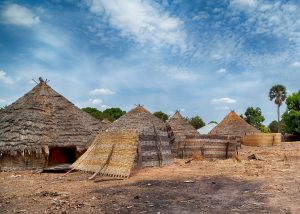Video: The Torghar Conservation Programme of the Suleiman Markhor, Pakistan
Sustainable use as a community conservation method is practiced in many parts of the world as illustrated in this video case study of the successful Torghar Conservation Programme of the Suleiman Markhor of the Torghar Hills in Pakistan.
Overview
The markhor is a species of wild goat that lives in extremely rugged terrain with precipitous cliffs, rocky caves, and bare rock surfaces interspersed with patches of arid, steppe vegetation. Historically, the straight-horned (or Suleiman) markhor inhabited the mountains of Pakistan and Afghanistan, just inside the Afghanistan border. Today, the markhor is only found in the mountains of Balochistan Province, Pakistan. Here, locals have implemented a wildlife management plan called the Torghar Conservation Project, an innovative, community-based conservation program that allows for limited trophy hunting to conserve local populations of markhor, improve habitat for both markhor and domestic livestock, and improve the economic conditions for local tribes in Torghar.
The project, which has been in effect since 1985, has increased the Torghar Hills population from fewer than 200 animals in the mid-1980s to more than 3,000 animals today. This growth can be attributed to the substantial reduction in mortality that occurred when uncontrolled hunting by tribes was stopped, as well as the virtual elimination of poaching driven by the hiring of more than 80 game guards from the local population.
This video, produced by The Osprey Filming Company in 2014, runs 12 minutes and 44 seconds.



